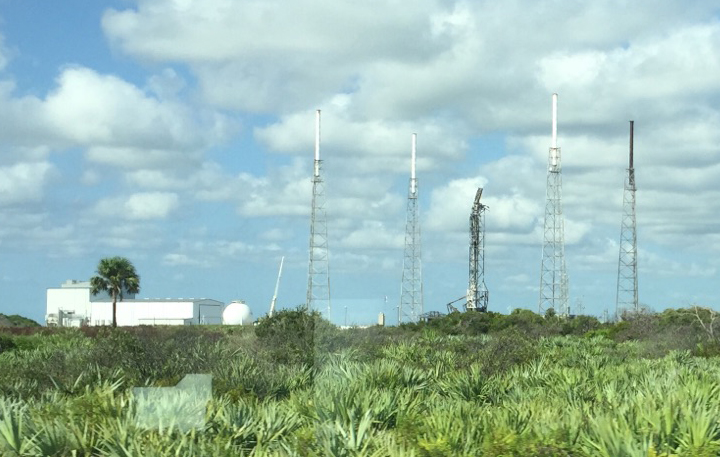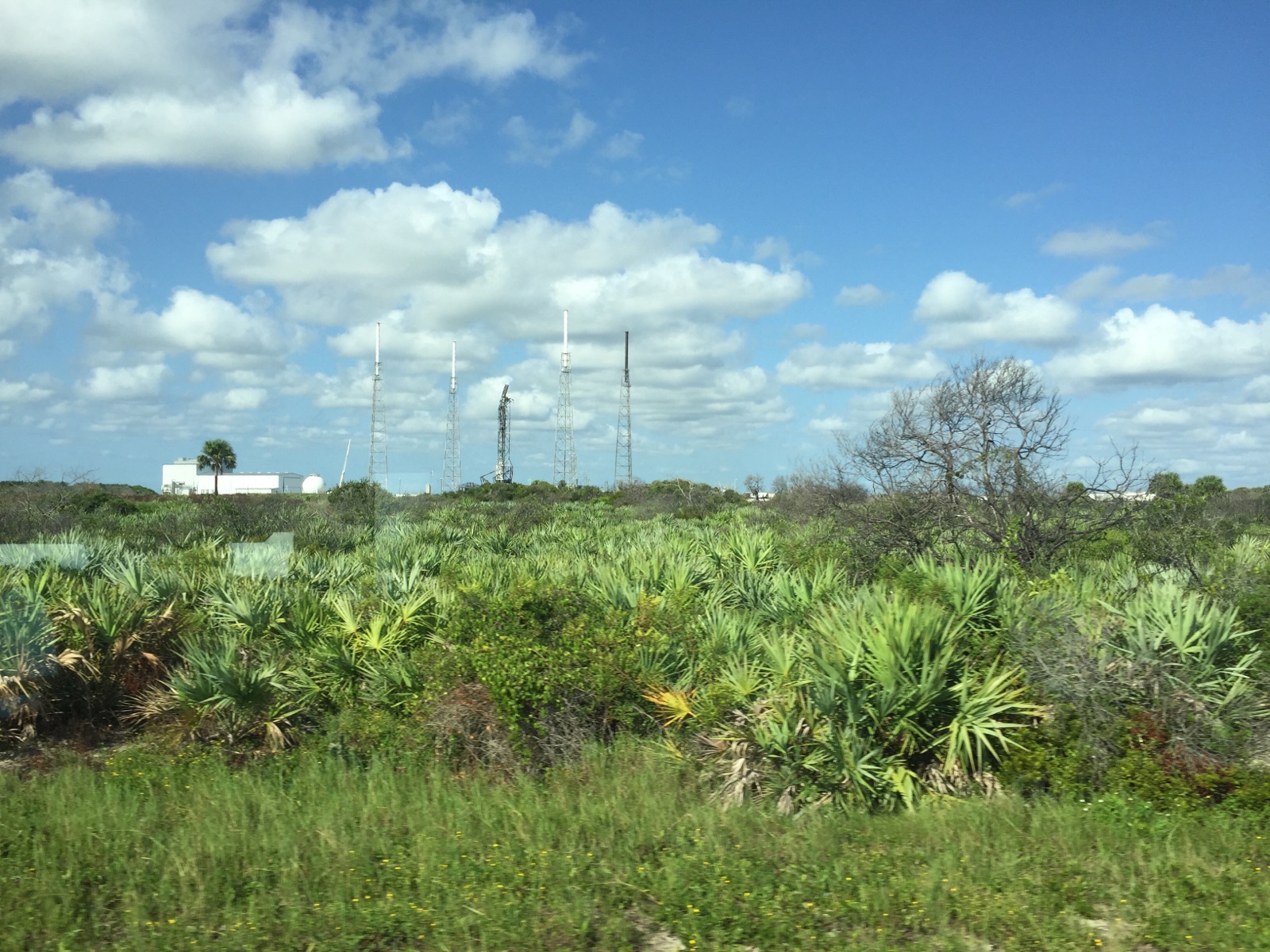
CAPE CANAVERAL, Fla. — The explosion of SpaceX's Falcon 9 rocket last week did a number on one of the launchpads here at Cape Canaveral Air Force Station.
On Sept. 1, the Falcon 9 exploded at Space Launch Complex 40 (SLC-40) during a routine engine test ahead of the planned Sept. 3 launch of the Amos-6 communications satellite. Both the rocket and its payload were destroyed.
The massive fireball appears to have blackened and disfigured SLC-40's strongback support tower and charred one of the facility's four lightning towers.
We got a firsthand look at this damage today (Sept. 7) during the drive to neighboring SLC-41, to see the rollout of NASA's OSIRIS-REx asteroid-sampling spacecraft and its United Launch Alliance Atlas V rocket. OSIRIS-REx is scheduled to launch tomorrow evening (Sept. 8) on a mission to retrieve samples from a potentially hazardous asteroid named Bennu. The mission will launch from Space Launch Complex 41, which is about 1.1 miles (1.8 kilometers) away from the SpaceX pad.
SpaceX representatives have said that the Sept. 1 explosion apparently originated around the Falcon 9's upper-stage oxygen tank. But they're still investigating exactly what happened.
"We are currently in the early process of reviewing approximately 3,000 channels of telemetry and video data covering a time period of just 35 to 55 milliseconds," SpaceX representatives wrote in a statement on Sept. 2.

The Sept. 1 mishap was the second accident involving a Falcon 9 in the past 14 months. On June 28, 2015, a Falcon 9 rocket broke apart less than 3 minutes after lifting off from Cape Canaveral, scuttling a robotic cargo mission to the International Space Station for NASA.
Get the Space.com Newsletter
Breaking space news, the latest updates on rocket launches, skywatching events and more!
After three weeks of investigation, SpaceX traced the June 2015 accident to a single faulty steel strut in the Falcon 9's upper stage. A Falcon 9 didn't fly again until Dec. 21, 2015, when the rocket successfully launched 11 satellites for the company Orbcomm. The Falcon 9's first stage, meanwhile, came back to Cape Canaveral 9 minutes after liftoff, becoming the first orbital rocket ever to land back on Earth.
Follow Mike Wall on Twitter @michaeldwall and Google+. Follow us @Spacedotcom, Facebook or Google+. Originally published on Space.com.
Join our Space Forums to keep talking space on the latest missions, night sky and more! And if you have a news tip, correction or comment, let us know at: community@space.com.

Michael Wall is a Senior Space Writer with Space.com and joined the team in 2010. He primarily covers exoplanets, spaceflight and military space, but has been known to dabble in the space art beat. His book about the search for alien life, "Out There," was published on Nov. 13, 2018. Before becoming a science writer, Michael worked as a herpetologist and wildlife biologist. He has a Ph.D. in evolutionary biology from the University of Sydney, Australia, a bachelor's degree from the University of Arizona, and a graduate certificate in science writing from the University of California, Santa Cruz. To find out what his latest project is, you can follow Michael on Twitter.









